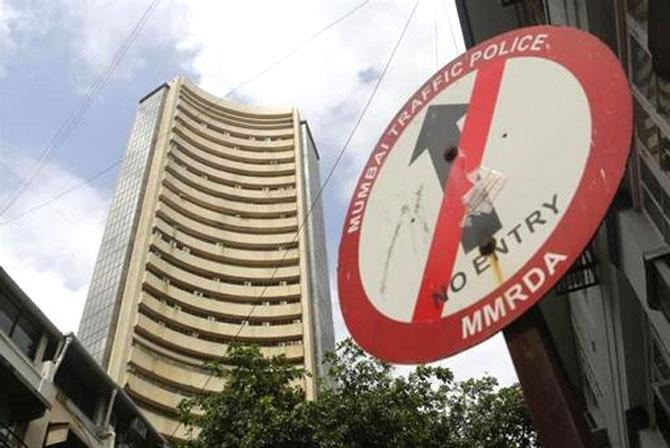 | « Back to article | Print this article |
'Markets are unprepared for Lok Sabha elections'
The assembly polls’ outcome saw benchmark market indices touch new highs on Monday, after nearly six years. However, Shankar Sharma, vice-chairman and joint managing director of First Global, the global financial securities house, feels the markets are reading too much into the outcome of these polls. Given the narrow nature of the rally, he tells Puneet Wadhwa he is doubtful if the up-move can sustain. Excerpts:
What are your interpretations from the outcome of the assembly polls? Have the markets over-reacted?
To extrapolate any assembly results to the larger Lok Sabha elections is fraught with danger. In 2003 and 2008, a similar trend was noticed and we know how that turned out.
Assembly polls are played on very local factors and local leaders, not on larger issues. The markets have over-reacted, without any doubt. In the weeks and months to come, they will realise the folly of such extrapolation.
Is this up-move sustainable? Do you think it is more of a sell on a rise market?
Given the very narrow nature of this rally, it seems very doubtful that it can sustain. The broad market is still at least seven to 10 per cent away from its 2008 highs and that shows how superficial this up-move is.
Click on NEXT for more...
'Markets are unprepared for Lok Sabha elections'
How different or similar will the outcome be of the general elections scheduled for 2014? How well are the markets prepared for a fractured mandate in the those elections? How are the markets and foreign institutional investors (FIIs) interpreting these developments?
The markets are totally unprepared for the 2014 elections. They are reading too much into these polls. FIIs are generally only momentum- driven and have no fixed views.
If they are betting on India because of the very key improvements in the current account (a near-surplus now), a vastly more competitive currency, rising GDP (gross domestic product) growth, rising manufacturing PMI (Purchasing Managers Index), then their optimism is justified.
However, if they betting on a Bharatiya Janata Party sweep in 2014, they might be disappointed -- the cold arithmetic doesn’t bear out such optimism. The states that have polled have a total of 70 Lok Sabha seats; the BJP already has around 30 of these.
Add another 20 and that takes it to 135. Add another 25–30 and you get 160–170. So, 272 (the minimum needed for a majority) is still a long way away. This is the math, like it or not!
Between now and the general elections, do you think the ruling party can change things significantly in terms of economic policies or sops, so that the markets can interpret these in a meaningful way?
Let’s see. In my view, a lot of core changes have happened already like the improvement in GDP growth, export growth, rising FDI (foreign direct investment), FII flows, current account deficit (CAD) reduction, etc. Inflation is the core remaining problem.
What the (ruling) Congress (party) needs are more forceful speakers, who can clearly articulate its economic achievements to the masses. Those achievements are considerable, especially in the backdrop of a once-in-a-lifetime great recession since 2008.
Click on NEXT for more...
'Markets are unprepared for Lok Sabha elections'
From a macro perspective, how much have the markets built in the prospects of a bond-buying tapering (by the US Federal Reserve)? Come 2014, do you expect this to significantly dent the overall sentiment in the emerging market (EM) pack?
The taper will hurt all EMs but given India’s vastly better CAD situation now, as compared to other chronic CAD countries like Brazil, Indonesia or South Africa, I believe India will be far better placed. But nobody gives any credit to the government for anything constructive any more, it seems!
How much is India insulated from all this, given the outlook for key macros at the domestic level and earnings forecast for the next few quarters, amid the evolving political landscape?
India’s main risk is political -- a weakened UPA (United Progressive Alliance) or a Third Front+Congress seems the most likely options. Both of which might not be liked by the markets. The earnings picture seems average, with no great upside surprises seen for the next couple of quarters.
So, what is your strategy or advice to investors at the current juncture, from a near to medium-term perspective? Which sectors and stocks are you bullish and bearish on?
The strategy would be to still buy pharmaceutical, information technology and automobiles, and some selective beta bets like Larsen & Toubro. The rest of the market seems pretty unappetising.



